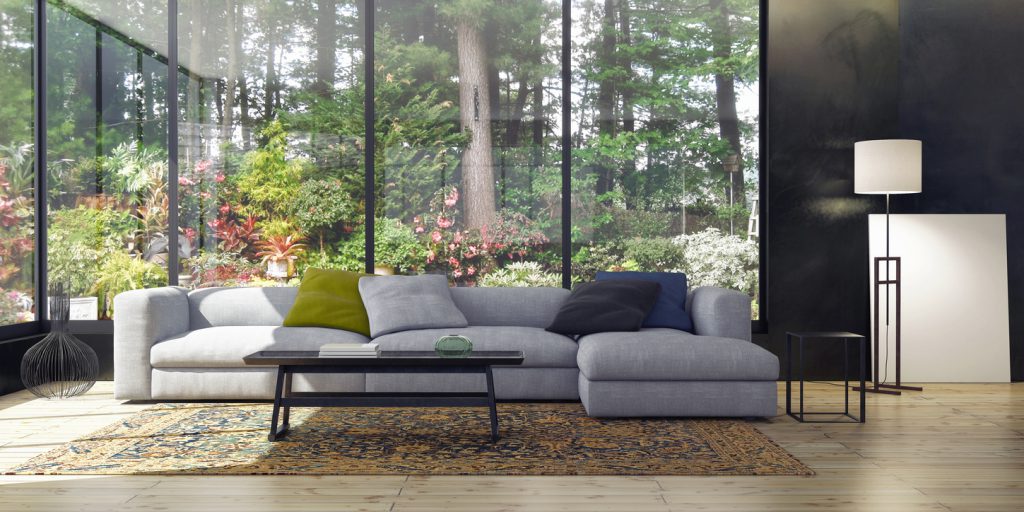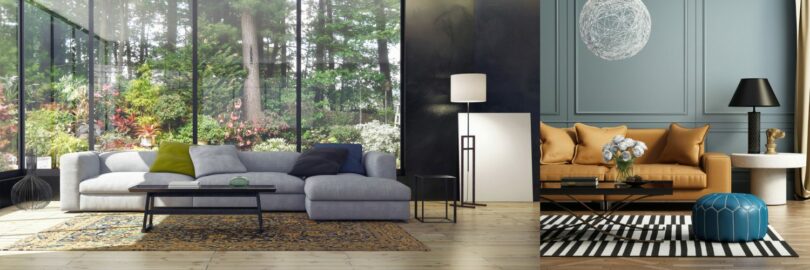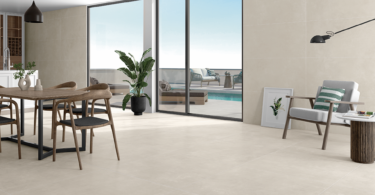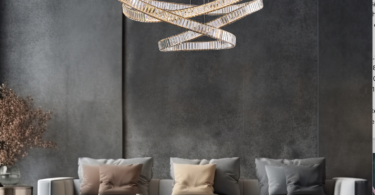Do you have a chair or couch that needs recovering? Read on for some pointers on choosing the best-suited material for the job…
Colour – This can make a strong impact in many ways, so ask yourself what kind of mood you want to create in the room. For instance, a light-coloured fabric used on large furniture in a small room can make the space look bigger than it is. Similarly, it’s best to avoid a very bold colour on pieces in a small room. Neutral hues are generally the safest best. Also, try pairing furniture that’s been upholstered in a solid colour with cushions, rugs and more in either contrasting or complementary colours and patterns. Sticking to trends can prove costly, as these change often; rather pick a colour you can live with long term. And avoid delicately-coloured fabrics around animals and children.
Style – Choose a fabric that complements the piece of furniture you want to cover, as well as the look and feel of your space. Some fabrics appear casual, while others look more formal. For a safe bet, match a more ‘traditional’ fabric with classic furniture, and pair modern fabrics with contemporary furniture. Or mix and match fabrics for a bit of a twist if it suits your particular taste and personality.
Durability – Does your room get a lot of sun? Are there pets on the furniture? Do you have small children? Does anyone suffer from allergies? This will all influence the type of upholstery fabric you choose. Woven patterns tend to hold up longer than printed ones, as do higher thread counts and tight weaves. As a rule, denser fabric lasts longer. Steer clear of printed and heavily textured fabrics that wear out in spots where you sit most often. Furniture pieces that are subjected to daily wear and tear need to be covered in tough, durable fabrics – distressed leather and stain-resistant fabrics are great for little people and pets; something like silk, not so much. Slipcovers that can be put in the wash can also offer a solution in this department. Avoid natural fabrics like cotton and linen if your furniture is going to be placed somewhere in direct sunlight, as they fade over time.
More hints and tips
• Avoid large patterns on a small piece of furniture.
• Choose patterns that will accentuate the shape of your furniture. For instance, stripes would look great on a tall and sleek, upright chair, while florals would work better on more rounded pieces.
• Focus on comfort and quality above all else – it will only look as good as it feels.
• Compare similar fabrics when comparing thread counts. The fabric with the higher thread count will likely wear better and is more likely to resist dirt and stains. Open weaves allow dirt and liquids to penetrate into the fibres, while tightly-woven fabrics will keep spills on the surface so they’re easier to clean.
• When using patterned fabric, be sure to line the prints up all over the piece. From a distance it should look as though only one piece of fabric is covering the entire chair or couch.
• Take note of how much maintenance the fabric will need over time before you commit.











Leave a Comment